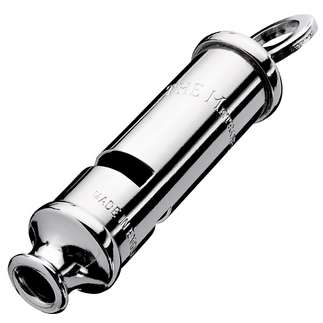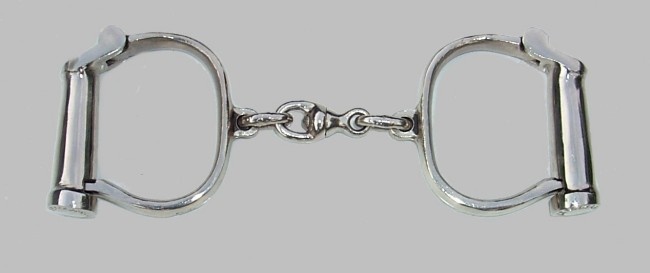Post by shangas on Dec 4, 2011 0:54:49 GMT
The Toronto Constabulary as featured MM is heavily based on the police-forces that were then in operation in London, England. I'm creating this thread to discuss Victorian-era law enforcement.
The Victorians were the first people to have a real police-force. Prior to this, police as we know them today, did not exist. Cities were patrolled by bounty-hunters, who would capture a known criminal for a fee, night watchmen, who would ensure the enforcement of curfews, constables, who would keep the peace, and Justices and Magistrates, who would pass judgement on criminals.
But an actual police-force, which enforced the law, arrested criminals, charged them, investigated crime-scenes, kept the peace and investigated and solved crimes as we know today, did not exist until 1829.
With the expansion of London, it was evident that the old ways of law-enforcement, which were a hodgepodge of various offices, groups and institutions, were ineffective. The Metropolitan Police Act was passed and Robert Peel created the London Metropolian Police Service ("Scotland Yard") in 1829. This is why London policemen are called 'Bobbies'.
The concept of police was so new that initially, there was a lot of opposition. People didn't want officers who could snoop and peek and poke around. The choice of navy blue police-uniforms (as seen in MM) was to differentiate the police, a civilian force, from the army (then dressed in red; the famous 'redcoats'), a military force.
Police originally wore strengthened top hats to protect their heads from injury. In 1863, the Metropolitan Police formally adopted the now famous "Custodian" Helmet, worn by all the officers in MM.
Before an age of walkie-talkies, portable radios and cellphones, policemen communicated by using the small, but extremely effective 'Metropolitan' police-whistle:

Invented by Joseph Hudson in 1883, produced by the ACME Whistle Co. and provided to all officers of the London Metropolitan Police Service. Police-whistles of various kinds had been used before, along with hand-rattles, but they were generally ineffective.
The success of the Metropolitan Whistle was its sheer volume and range. On a clear day with no background noise, it can be heard up to a mile away. You hear the distinct sound of the whistle in the episode "The Murdoch Identity".
I own one of these whistles myself (a souvenier of a trip to London), and believe me...they are REALLY loud!!
To secure suspects, police used heavy but effective 'Darby' style handcuffs:

When patrolling at night, constables lit their way using bullseye lamps, like this one:

Called 'Bullseye' lamps because of the size and thickness of their lenses.
Prior to the last decade of the 1800s, police approached crime-scenes extremely differently from how they are approached today. There was little emphasis on preserving crime-scene (in fact, there was probably no emphasis at all). Crime-scenes were washed clean the moment the body had been taken away. Cameras (at the time, heavy, bulky, tripod-stand objects with magesium flash-powder) were rarely used. Most crime-scenes would've been sketched by a police-artist. There was no emphasis on collecting trace-evidence such as blood, hair or dusting for fingermarks or indeed, the recording of fingerprints of suspects when arrested. Ballistics was in its infancy at the time. Police relied heavily on eyewitness accounts and testimonies to help solve crimes.
It wasn't until the 1890s, when MM takes place, that real Crime-Scene-Investigation, of the type we know today, started taking place, with photographs, mugshots, criminal profiles, extensive recordkeeping, fingerprinting and other techniques which are common practice today. This is just one example of how advanced Murdoch's scientific and investigative techniques would've been in the second half of the 1890s.
The Victorians were the first people to have a real police-force. Prior to this, police as we know them today, did not exist. Cities were patrolled by bounty-hunters, who would capture a known criminal for a fee, night watchmen, who would ensure the enforcement of curfews, constables, who would keep the peace, and Justices and Magistrates, who would pass judgement on criminals.
But an actual police-force, which enforced the law, arrested criminals, charged them, investigated crime-scenes, kept the peace and investigated and solved crimes as we know today, did not exist until 1829.
With the expansion of London, it was evident that the old ways of law-enforcement, which were a hodgepodge of various offices, groups and institutions, were ineffective. The Metropolitan Police Act was passed and Robert Peel created the London Metropolian Police Service ("Scotland Yard") in 1829. This is why London policemen are called 'Bobbies'.
The concept of police was so new that initially, there was a lot of opposition. People didn't want officers who could snoop and peek and poke around. The choice of navy blue police-uniforms (as seen in MM) was to differentiate the police, a civilian force, from the army (then dressed in red; the famous 'redcoats'), a military force.
Police originally wore strengthened top hats to protect their heads from injury. In 1863, the Metropolitan Police formally adopted the now famous "Custodian" Helmet, worn by all the officers in MM.
Before an age of walkie-talkies, portable radios and cellphones, policemen communicated by using the small, but extremely effective 'Metropolitan' police-whistle:

Invented by Joseph Hudson in 1883, produced by the ACME Whistle Co. and provided to all officers of the London Metropolitan Police Service. Police-whistles of various kinds had been used before, along with hand-rattles, but they were generally ineffective.
The success of the Metropolitan Whistle was its sheer volume and range. On a clear day with no background noise, it can be heard up to a mile away. You hear the distinct sound of the whistle in the episode "The Murdoch Identity".
I own one of these whistles myself (a souvenier of a trip to London), and believe me...they are REALLY loud!!
To secure suspects, police used heavy but effective 'Darby' style handcuffs:

When patrolling at night, constables lit their way using bullseye lamps, like this one:

Called 'Bullseye' lamps because of the size and thickness of their lenses.
Prior to the last decade of the 1800s, police approached crime-scenes extremely differently from how they are approached today. There was little emphasis on preserving crime-scene (in fact, there was probably no emphasis at all). Crime-scenes were washed clean the moment the body had been taken away. Cameras (at the time, heavy, bulky, tripod-stand objects with magesium flash-powder) were rarely used. Most crime-scenes would've been sketched by a police-artist. There was no emphasis on collecting trace-evidence such as blood, hair or dusting for fingermarks or indeed, the recording of fingerprints of suspects when arrested. Ballistics was in its infancy at the time. Police relied heavily on eyewitness accounts and testimonies to help solve crimes.
It wasn't until the 1890s, when MM takes place, that real Crime-Scene-Investigation, of the type we know today, started taking place, with photographs, mugshots, criminal profiles, extensive recordkeeping, fingerprinting and other techniques which are common practice today. This is just one example of how advanced Murdoch's scientific and investigative techniques would've been in the second half of the 1890s.

 Have you read any of the books? I am currently on the 3rd one. There are 7. It's interesting to read about the procedures, like the inquests (which haven't been shown on the TV show). I would love to have one of the bull's eye lamps they use on MM. I do have a Victorian era lantern like they used on ships. It's very heavy glass!
Have you read any of the books? I am currently on the 3rd one. There are 7. It's interesting to read about the procedures, like the inquests (which haven't been shown on the TV show). I would love to have one of the bull's eye lamps they use on MM. I do have a Victorian era lantern like they used on ships. It's very heavy glass!
